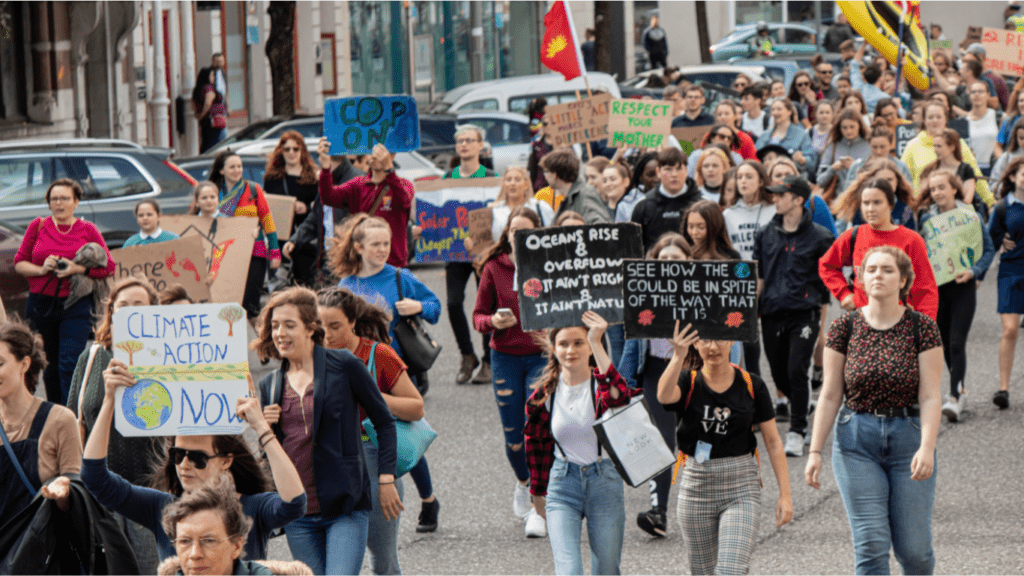The Rise Of Youth Movements
Youth movements have become powerful forces for societal transformation across the globe. Young activists are organizing large-scale campaigns, with notable examples including Fridays for Future and Black Lives Matter. These movements focus on critical issues like climate change, racial equality, and human rights.
Technology plays a central role in their expansion. Social media platforms amplify their messages, creating networks that enable real-time collaboration. Hashtags, live videos, and digital petitions help them engage millions, cutting across geographic and cultural barriers.
Education reform efforts also fuel this rise. Young advocates, driving initiatives for accessible and inclusive education, challenge outdated systems while promoting equal opportunities. Efforts by organizations like Malala Fund exemplify this momentum.
Political engagement marks another key trend. Many youth-led movements demand policy reforms, participating in protests and engaging policymakers directly. For example, the pro-democracy movement in Hong Kong showcased the determination and organization of a new generation.
These movements operate on localized and globalized fronts. Local campaigns address community-specific issues, while global efforts unite activists under common causes. This multi-layered approach strengthens their influence and impact.
Key Characteristics Of Youth Movements
Youth movements thrive on shared values, innovative methods, and collective action. These characteristics distinguish their impact in driving social, environmental, and political change.
Passion And Purpose
Passion drives youth movements to confront pressing issues like climate change and inequality. Purpose unites participants behind clear objectives, creating focused and determined campaigns. For example, Fridays for Future rallies millions of young people around the world with a clear climate justice agenda.
Use Of Technology And Social Media
Youth movements effectively utilize technology to amplify their reach. Social platforms like Instagram and Twitter enable activists to spread messages, mobilize participants, and engage global audiences. Hashtags and viral content, such as #BlackLivesMatter, create opportunities for immediate awareness and action.
Grassroots Organizing
Grassroots organizing empowers youth movements to build community-specific solutions. Localized efforts, like neighborhood cleanups or education initiatives, draw support from individuals directly affected by the issues. These movements often grow organically into broader coalitions, combining local and global strategies for greater impact.
Notable Youth Movements Making An Impact

Youth movements continue to transform societies by addressing global and local challenges. Their influence spans environmental activism, racial justice, and political reform.
Fridays For Future
Fridays for Future, sparked by Greta Thunberg in 2018, mobilizes millions globally to demand climate action. Students organize strikes in over 150 countries, advocating for policies aligned with the Paris Agreement. By integrating social media platforms like Instagram and Twitter, participants amplify their message, gaining global support and engaging policymakers. Regional chapters adapt to local climate challenges, strengthening their relevance and reach.
Black Lives Matter
The Black Lives Matter (BLM) movement, founded in 2013, addresses racial injustice and systemic inequality. Young activists use BLM as a platform to organize protests, launch petitions, and promote legislative reform. Viral hashtags like #BlackLivesMatter increase awareness, while creative campaigns like street murals highlight calls for equity. Beyond protests, BLM emphasizes community empowerment, fostering education initiatives and local resilience.
Pro-Democracy Movements In Hong Kong
The pro-democracy movement in Hong Kong gained momentum in 2019, driven primarily by youth advocating political autonomy and freedom of expression. Protesters use encrypted communication tools to coordinate demonstrations and evade surveillance. Tactics like flash mobs and laser light distractions showcase their resourcefulness. Despite intense opposition, these activists persist, committing to democratic reforms and international solidarity campaigns.
Challenges Faced By Youth Movements
Youth movements encounter various challenges as they strive to create meaningful change. Despite their innovation and determination, obstacles like:
- systemic resistance
- sustainability issues
- inclusivity concerns
Resistance From Established Systems
- Youth movements often face opposition from governments, corporations, and other entrenched power structures.
- These entities may see young activists as a threat to the status quo, leading to crackdowns like censorship, legal actions, or even violence.
- Pro-democracy protests in Hong Kong experienced significant resistance, with young leaders being arrested under national security laws.
- Structural roadblocks such as inaccessible political systems further diminish their ability to influence policies directly.
Longevity And Sustainability
Sustaining momentum over time remains a critical issue for youth-led initiatives. Many movements experience rapid growth initially but struggle to maintain participation or funding long-term. For example, climate activism campaigns like Earth Strike face challenges in keeping volunteers engaged and resources available for consistent action. A lack of institutional support or experienced guidance exacerbates these difficulties, especially when facing complex, long-term societal issues.
Intersectionality And Inclusivity
Youth movements frequently struggle with ensuring diverse representation and addressing intersectional challenges. Without inclusivity, these movements risk alienating marginalized communities, reducing overall effectiveness. For instance, some feminist campaigns have faced criticism for not prioritizing the voices of women of color or LGBTQ+ individuals. Effective collaboration across different social, cultural, and economic backgrounds is necessary to create unified and impactful movements.





